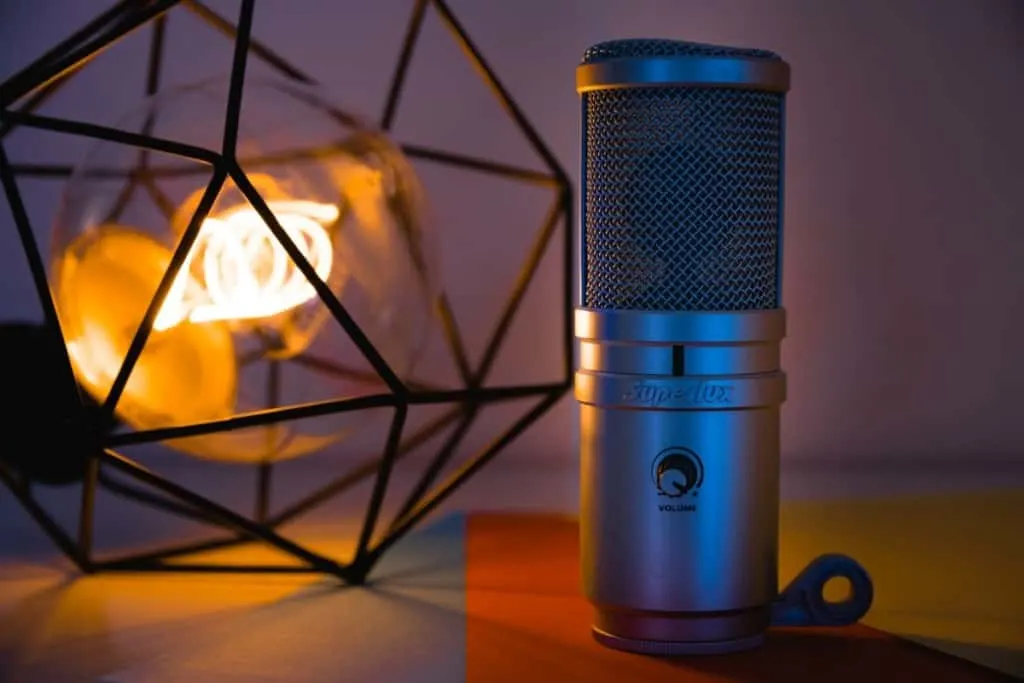I’m sure you heard the term before; you are not alone, many of us wonder what phantom power is.
So what exactly is phantom power?
Phantom Power is an electrical current (usually 48V) traveling through an XLR cable and reaching a condenser microphone that needs this current to work. Without phantom power, 98% of condenser microphones will not work.
Those are the simple words for it; we are about to take you on a deep journey to every aspect of this technology including the true definition and meaning of phantom power. Read on and learn everything you always wanted to know about what phantom power is.
Take a look at my video on phantom power.
Please subscribe to the channel here. It’s free!
Phantom Power, A Little History (This Is Important!)
Phantom Power has been around for many decades; actually, its first appearance was back in 1919.
It was largely used in the telephone industry and occasionally cascaded into building microphones with the same technology.
The first commercialized microphone with that technology was in 1964. Condenser microphones still rule the market for studio applications since they offer unmatched warmth and tone. If you have a condenser microphone, then you definitely need a source of phantom power for it.
Take a look here on Amazon at one of the current best selling phantom powered condenser microphones on Amazon.

Why Do Condensers Need Phantom Power?
Condenser microphones are capable of delivering super high-quality audio because of their construction. The heart of this kind of microphone is called a capsule and inside of it, there are two very thin layers of electrical-conducting metals forming a capacitor.
The membrane of the microphone is hit by the sound waves of the voice or instrument, causing the distance between the plates to change, and hence, you have sound translated to electrical current.
“That is great, but what does phantom power have to do with it?”
Very simple: this current (48v mostly) adds current to the capsule and buffers the signal with very little voltage that would otherwise come from it. This makes the sound loud and powerful when it leaves the circuit. This way, condenser microphones can generate a very detailed and warm sound that is loud enough for recordings and live situations.
What happens if you don’t feed condensers with phantom power? In 90% of the cases, the microphone will not work; you will get no sound out of it.
If you own a condenser microphone, you definitely need phantom power for it.
You can even purchase separate stand-alone phantom power units to suit your needs. Check them out here
Where Can I Find Phantom Power Sources?
Phantom power used to be a very rare feature to find decades ago but is now very common. Mostly any piece of gear where you can plug a microphone in will have this ability.
For example, I usually do small recordings at home with a cheap Avid Fast Track Solo that fits in the palm of my hand and offers phantom power for my condenser microphones.
Most mixers will have it labeled as “phantom power”, simply “phantom” or even “48v”. Whichever label yours has, make sure to turn it on when you have a condenser in line.
Choosing Gear Can Be Really Hard!
Home recording requires a whole series of equipment, and it can be difficult to do the research to figure out exactly what to buy depending upon your budget.
I have written a complete guide to exactly which equipment you should get depending on your budget.

Is It Possible To Buy A Phantom Power Source?
The answer to this question is yes. Actually back when condensers were not popular, most mixers didn’t have the option to turn on the 48 volts to send through the line. Nowadays, there are also some brands manufacturing only phantom power devices for plugging your condenser to an old mixer or to a new one with no phantom power capabilities.
Most big sound and microphone brands manufacture them, you can buy:
· Mackie M48 Phantom Power Supply
The use of phantom power and condenser microphones in live situations is rare and limited because they are too sensitive and pick up all the sounds around them. Mostly, these situations require dynamic microphones to isolate voices and instruments.
Most audio interfaces have a phantom power supply source. You can read more about these here in another one of my articles
Take a look at this informative YouTube video that explains phantom power.
Can Phantom Power Damage Dynamic Mics And Instruments?
This is a very common question coming from people who use phantom power from the same source they plug dynamic mics and instruments to. There are several things you should know about this:
- Phantom power travels through XLR cables – There are very few instruments that can be plugged in with an XLR cable. For example, string instruments like guitars, basses, violins and such are mostly plugged in with a ¼ cable.
- The 48v of the XLR cancel one another – Dynamic microphones are also plugged in with an XLR cable, so how do we protect them? Well, if you’ve ever seen an XLR cable, you´ll know that they have three conductors. One of them is the ground and conducts no current. The remaining two will have the same voltage (48V DC in most cases) and since there is no voltage difference between them, no current will flow from it to the mic. Dynamic microphones and instruments are safe with phantom power.
On the other hand, if you don’t have phantom power to feed your condenser microphone(s), you’ll get no sound from them. Whenever you think of the acquisition of a mixer bear this in mind and always choose one with phantom; you never know what the future can bring.
Check out my article that discusses using a preamp to record vocals. You can find it here.
Does An Acoustic-Electric Guitar Use Phantom power?
If you have an electric acoustic guitar you know that you can plug it to an amplifier.
This is possible thanks to the pickup that your guitar has. This pickup “picks up” the vibration of the strings and translates it into electrical current (just like a microphone diaphragm does).
You might also know that it needs a 9-volt battery to work. Well, that is what “pre-amplifies” the signal to send it out to the world at an audible volume. In case you have a guitar with a passive pickup (a Gibson with an LR Baggs LB-6, for example) you can think of it as a regular electric guitar pickup needing a pre-amplifier and a power amplifier to be audible out in the world.

Does Phantom Power Need An XLR Connection?
There is a rule in the world of music and sound that says you can’t deliver phantom power through a TRS (1/4” plug). This is something every sound man will tell you a million times. Actually the theory says something different: it is possible to send phantom power through a TRS plug. Let´s take a look at why:
- XLR connection – Pin 1 (ground) + Pin 2 (hot/positive) + Pin 3 (cold/negative) = Phantom power capability.
- TRS connection – Sleeve (ground) + Tip (hot/positive) + Ring (cold/negative) = Phantom power capability.
Although this is technically true there is a huge difference between these two different types of connections.
When you plug and unplug an XLR cable, all three elements are disconnected at the same time. Hot, cold and ground are released at the same time and there is no hazard for the microphone. On the other hand, when you plug and unplug a TRS connector there is a risk of leaving only the tip and the ring inside with the phantom power on. This means you´ll be taking the ground out of the connection and this could be a hazard for your equipment.
So, as a conclusion, it is technically possible to do it but not recommended at all, and hence most equipment will not send phantom power to a TRS connection.
Here’s a useful video on phantom power supply options.
Does Phantom Power Affect The Sound?
Phantom power does affect the sound in two very different ways, let´s take a look:
The first effect we are going to talk about is the positive effect it does have on condenser microphones.
Let’s, as an example, think you are recording an acoustic guitar for your upcoming album. If you want to capture the body of the sound with rich lows and mids, then you´ll need a condenser microphone close to the famous Shure SM81.
The response of this microphone is perfect to capture the nuances of the wood on those frequencies. On the other hand, you can use a dynamic SM57 to capture the mid and high frequencies of your instrument.
This sound characteristic is related to the structure of each microphone but also to the fact that one has phantom power to accentuate those frequencies. So it does have an effect on the sound, a positive one.
Some Users Report Hiss In The Signal Path Because Of Phantom Power
Some of the devices that offer phantom power can add a little hissing noise to the background of your recordings.
Some experts say that it is the phantom power adding some white, ghost noise to the line. If you are experiencing such a case, what you can do is to plug any dynamic mic to the device, turn off the phantom power and check if the hissing sound is still present. If it disappears and comes back when you turn phantom power on again, then you have to have it fixed, it is a faulty phantom power unit.
Conclusion
Phantom power has made the life of sound engineers, artists, record producers, and many other music professionals much easier. Being able to record the low frequencies on some instruments and vocals, used to be mission impossible and thanks to this technology it is something most people can even do at home.
Please feel free to take a look at this relevant article to further educate yourself. It discusses audio interfaces and is intended as a basic guide for newbies.
I hope we answered the original question of what is phantom power and that you have now a better understanding of how your condenser microphone actually works. Finally, we hope you also are more aware of what to do and not to do when it comes to phantom power.
